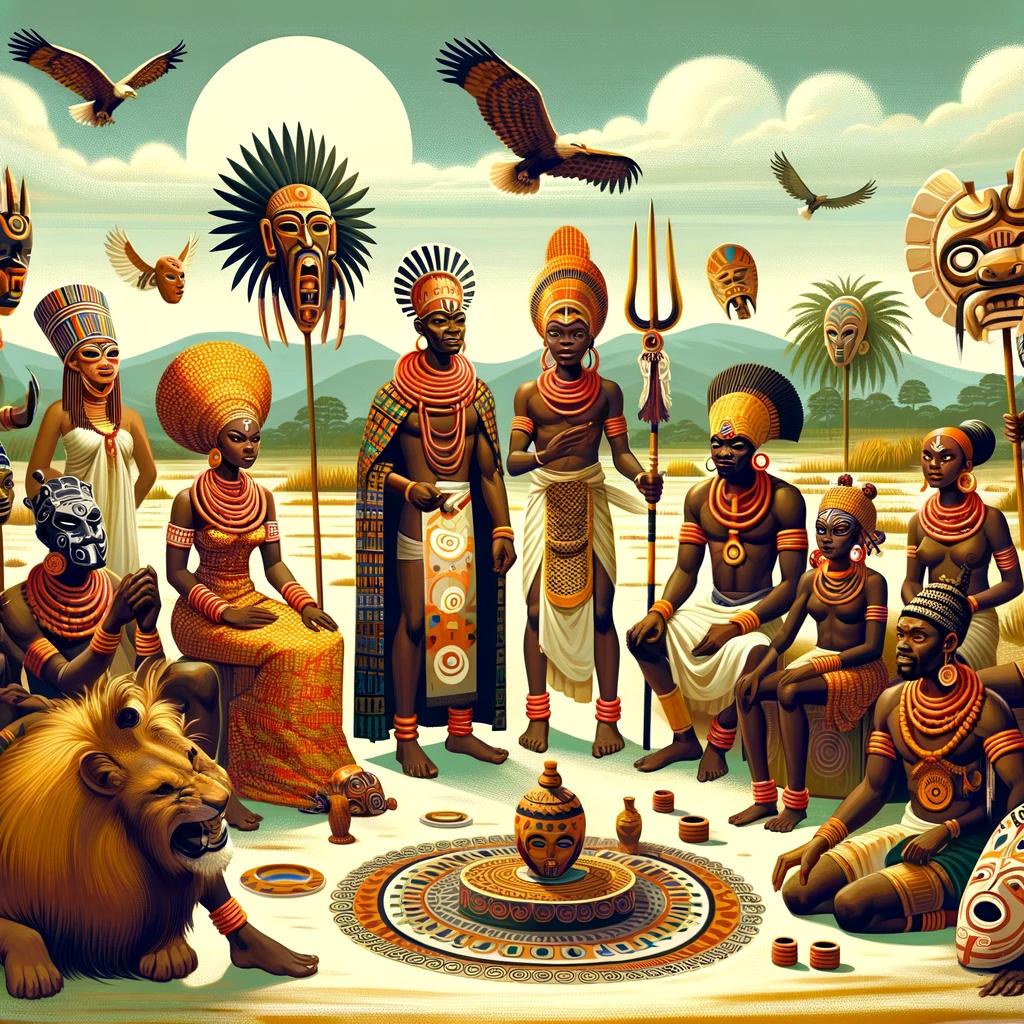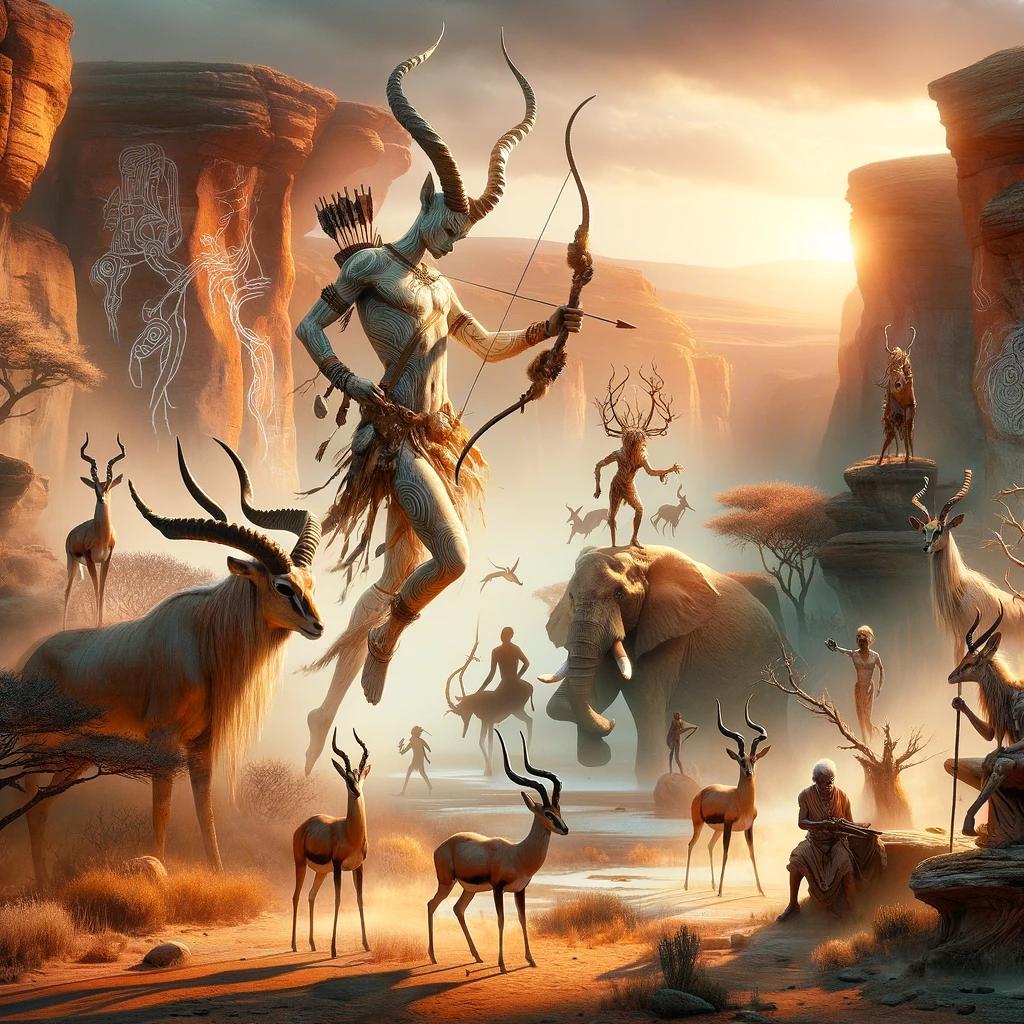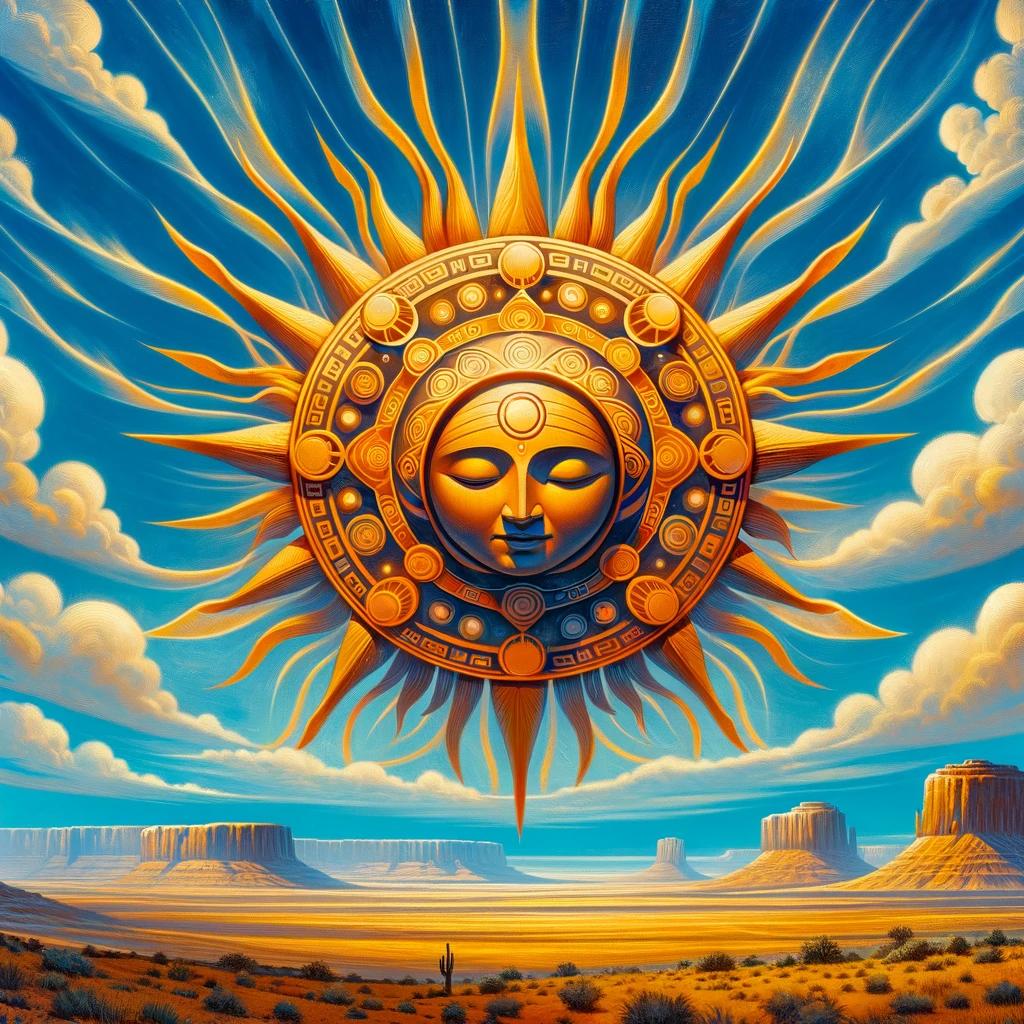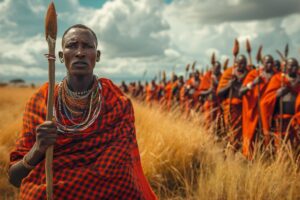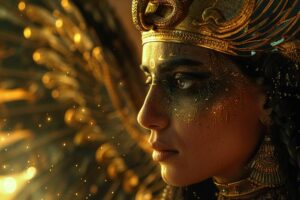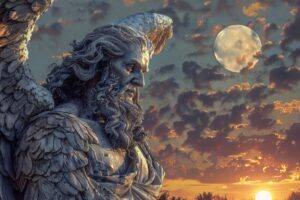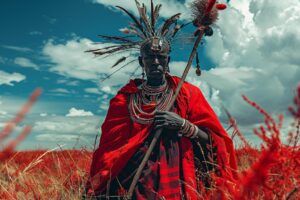Quechua Mythology Gods and Goddesses: Exploring the Ancient Inca Deities
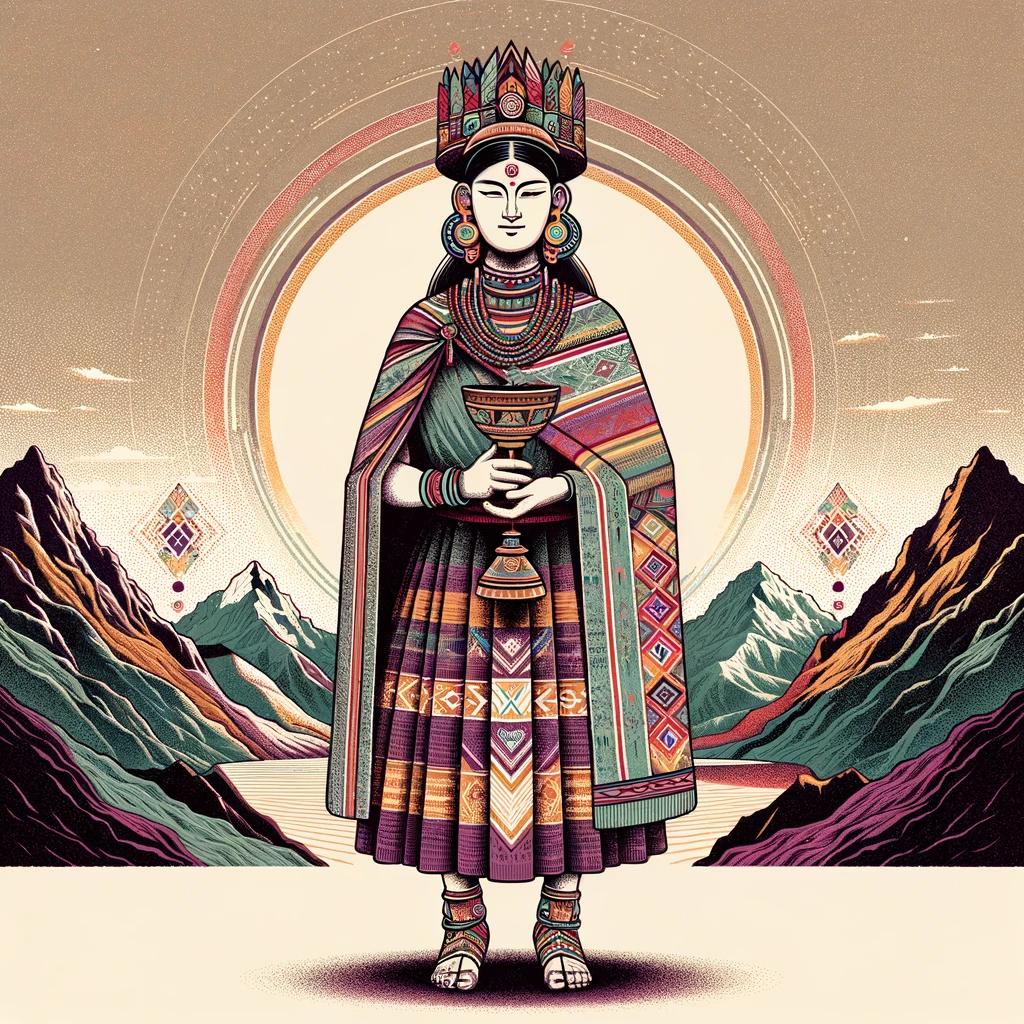
The Quechua mythology gods and goddesses are an integral part of the ancient Inca civilization. It includes deities such as Inti, the sun god, Mama Quilla, the moon goddess, Viracocha, the creator deity, and Pachamama, the mother earth goddess.
Other notable deities include Apu Illapu, the god of rain and thunder, Cochamama, the goddess of the sea, Cuichu, the god of the rainbow, and Catequil, the god of thunder and lightning.
Inca religion involved rituals, sacrifices, and reverence for these deities, which played a significant role in daily life. These mythological tales and beliefs continue to hold cultural significance today.
The Inca Empire: A Brief Overview
The Inca Empire, known as Tawantinsuyu in Quechua, was a vast and powerful civilization that thrived in the Andes region of South America.
It spanned from the 13th century to the 16th century, reaching its peak during the reign of Emperor Pachacuti. The Incas created an extensive network of roads and built remarkable cities, such as Cusco and Machu Picchu, showcasing their advanced engineering and architectural skills.
The Inca Empire was highly organized and governed by a complex system that focused on socio-political hierarchy, agriculture, and worshiping their gods and goddesses. At its height, the empire covered parts of modern-day Peru, Ecuador, Bolivia, Chile, and Argentina.
The Incas established a centralized government with Cusco as its capital city.
Under the Inca rule, a sense of unity was fostered through a common language (Quechua) and the belief in their divine origins.
They considered themselves the “Children of the Sun,” descendants of Inti, the Sun God.
The economy of the Inca Empire was based primarily on agriculture, with terraced farming techniques enabling the cultivation of crops in the high-altitude Andean valleys.
The Incas were skilled farmers who grew a variety of crops, including potatoes, corn, and quinoa.
Art, architecture, and craftsmanship played important roles in Inca society. They created intricate textiles, vibrant pottery, and exquisite metalwork, often depicting scenes from mythology and everyday life.
The Incas embraced their natural surroundings and integrated them into their art, showcasing their deep spiritual connection with the environment.
Despite their remarkable achievements, the Inca Empire fell to Spanish conquistador Francisco Pizarro in the 16th century.
The arrival of the Spanish marked the beginning of the end for the Inca civilization. The conquistadors dismantled the empire, imposed Spanish rule, and spread Christianity, effectively eradicating much of the Inca culture and beliefs.
Today, the remnants of the Inca civilization continue to captivate people worldwide. The magnificent ruins of Machu Picchu and other archaeological sites serve as a testament to the ingenuity and grandeur of this remarkable empire, while Quechua mythology, gods, and goddesses remain an integral part of Andean culture and heritage.
The Inca Pantheon: Gods and Goddesses
The Inca civilization revered a diverse pantheon of gods and goddesses, each representing different aspects of their worldview and daily life. Let’s delve into the fascinating mythology surrounding the Inca deities, including Inti, Mama Quilla, Viracocha, and Pachamama.
Inti: The Sun God
Inti, known as the Sun God, held the highest position in the Inca pantheon.
He symbolized vitality, fertility, and abundance. The Incas believed that Inti was the divine ancestor of their rulers, and they worshipped him as the provider of life, warmth, and prosperity.
Mama Quilla: The Moon Goddess
Mama Quilla, the Moon Goddess and wife of Inti, played a crucial role in Inca mythology. As a female deity, she was associated with fertility, childbirth, and the feminine aspects of creation.
Mama Quilla guided ceremonial, agricultural, and menstrual cycles and protected married women.
Viracocha: The Creator Deity
Viracocha was revered as the creator god in Inca mythology. According to belief, he brought forth the universe, mountains, and mankind. As the deity associated with agriculture and technology, Viracocha held immense significance in Inca culture.
Pachamama: The Mother Earth Goddess
Pachamama, the Mother Earth Goddess, occupied a prominent place in Inca mythology. She was revered as the provider of all necessities for human survival, such as food, water, and shelter.
The Incas paid homage to Pachamama through rituals and ceremonies, expressing their respect and gratitude.
Other Deities in Quechua Mythology
While Inti, Mama Quilla, Viracocha, and Pachamama were among the most prominent gods and goddesses in Quechua mythology, there were several other deities that held significance in Inca beliefs.
These lesser-known gods and goddesses represented various aspects of nature and daily life for the Incas. Let’s explore some of them:
Apu Illapu: The God of Rain and Thunder
Apu Illapu played a vital role in the Inca belief system as the god of rain, thunder, and storms. Incas believed that Apu Illapu controlled the weather and brought fertility to their crops, ensuring a prosperous harvest.
They revered him through rituals and offerings to ensure a bountiful rainfall and protection from drought.
Cochamama: The Goddess of the Sea
Cochamama held a special place in Quechua mythology as the goddess of the sea and wife of Viracocha, the creator deity. The Incas believed that Cochamama controlled the waters and had the power to bring both blessings and destruction.
They respected her and offered tributes to ensure safe voyages and abundant marine resources.
Cuichu: The God of the Rainbow
Cuichu was revered as the god of the rainbow in Inca mythology. Incas saw the rainbow as a bridge between the earthly realm and the divine. They believed that Cuichu brought hope, good fortune, and protection from harm.
Ceremonies and rituals were dedicated to him to seek his benevolence.
Catequil: The God of Thunder and Lightning
Catequil was an important deity associated with lightning, thunder, and storms. Incas believed that Catequil had the power to bring both destruction and renewal. They conducted rituals to appease him and protect their homes and crops from lightning strikes and other natural disasters.
These lesser-known gods and goddesses in Quechua mythology added depth and richness to the Inca belief system. The Incas worshipped them through ceremonies, offerings, and rituals, seeking their favor and protection in various aspects of their lives.
Beliefs and Worship in Inca Religion
The beliefs and worship in Inca religion encompassed a rich tapestry of rituals, sacred sites, and the integral role of deities in daily life.
Rituals and Sacrifices to the Gods
Rituals and sacrifices formed a pivotal aspect of Inca religious practices, serving as expressions of devotion and seeking blessings from the gods.
These ceremonies included offerings of food, drinks, and prized possessions to honor the deities. Animal sacrifices, particularly llamas, held great significance in these rituals as a means to communicate with the divine realm.
Sacred Sites and Temples
The Inca civilization designated specific sites and temples as sacred spaces to connect with their deities. These locations were carefully chosen for their natural elements or strategic positions. Temples dedicated to specific gods were constructed with meticulous craftsmanship, showcasing the importance of their respective divinities.
The Role of Deities in Daily Life
The deities played a central role in the daily lives of the Incas. They were believed to influence various aspects such as agriculture, weather, health, and fertility. The Inca people sought the favor and protection of the gods through prayers, offerings, and rituals, with the belief that their actions would ensure harmony and prosperity within their communities.
Children were taught from a young age about the deities and their significance in maintaining the balance of the natural and spiritual realms. The Inca calendar included festivals and ceremonies dedicated to worshiping specific gods, contributing to the continuous connection between the mortal and divine worlds.
Through their beliefs and practices, the Incas acknowledged the power of the gods in shaping their lives and society as a whole. The reverence and devotion displayed towards the deities reflected the deep spiritual connection between the Inca people and the divine forces they held sacred.
Mythological Tales and Legends
In Quechua mythology, a rich tapestry of captivating tales and legends has been passed down through generations. These stories provide insights into the origins of the world, the heroic deeds of legendary figures, and the complexities of love and tragedy.
Let us delve into the fascinating realm of Quechua mythology and explore its mythological tales and legends.
Creation Myths and Origin Stories
The Quechua people have treasured myths that explain the creation of the universe and the emergence of humanity. According to one prominent creation myth, Viracocha, the powerful creator deity, shaped the world and breathed life into the first humans.
This tale reflects the significance of Viracocha as the divine architect and highlights the Quechua belief in the interconnection between the divine and mortal realms.
Another captivating origin story involves the mythical sibling duo, Manco Capac and Mama Ocllo.
It is believed that they emerged from Lake Titicaca and were chosen by the sun god Inti to found the city of Cusco, the heart of the Inca Empire.
Their journey and subsequent establishment of Cusco symbolize the Quechua people’s deep connection to their ancestral lands and the importance of divine guidance.
Heroes and Heroines in Inca Mythology
Quechua mythology is replete with tales of brave heroes and heroines who undertake extraordinary quests and display remarkable abilities. One such figure is Ayar Manco, the legendary first Inca ruler.
According to legend, Ayar Manco led his people from the mythical cave of Pacaritambo to establish the kingdom of Cusco, laying the foundation for the Inca civilization. His feats embody the spirit of leadership, resilience, and the pursuit of a glorious destiny.
Inca mythology also celebrates the prowess of powerful heroines. The tale of Mama Ocllo, sister and wife of Manco Capac, portrays her as a wise and compassionate leader who played a vital role in nurturing and governing the Inca Empire.
Mama Ocllo’s story exemplifies the integral role of women in Inca society and their significance in both historical and mythological contexts.
Love and Tragedy in Mythological Stories
Love and tragedy are recurrent themes in Quechua mythological tales, reflecting the complexities of human emotions and experiences. One tragic tale revolves around the ill-fated love between the beautiful princess Huayna Capac and the commoner warrior Quito, who belonged to rival kingdoms.
Their forbidden love ultimately leads to a series of calamities, highlighting the conflicts between love, duty, and societal expectations.
Another poignant legend tells the story of Illapa, the benevolent god of thunder and lightning, and his love for the mortal maiden, Ima Sumaq.
Their forbidden love unfolds amidst the backdrop of celestial battles, as Illapa defies the heavens to be with his cherished mortal companion. This tale poignantly explores the complexities of divine-human relationships and the sacrifices made for love.
These mythological tales and legends offer glimpses into the rich cultural heritage of the Quechua people. They convey profound lessons, celebrate virtues, and impart wisdom that continues to resonate in modern times.
Influence and Legacy of Quechua Mythology
The influence of Quechua mythology is deeply ingrained in the history and culture of the Inca civilization. Despite the Spanish conquest and the subsequent spread of Christianity, elements of Quechua mythology have managed to survive and maintain their significance in modern times.
Spanish Conquest and Adaptation of Inca Religion
With the arrival of the Spanish conquistadors in the 16th century, the Inca religion underwent significant changes. The Spanish sought to convert the indigenous population to Christianity and suppress native religious practices.
As a result, elements of Quechua mythology were adapted and incorporated into the newly introduced Christian beliefs. This syncretism allowed the Quechua people to preserve certain aspects of their traditional beliefs while conforming to the expectations of the Spanish colonizers.
The Inca deities were often associated or equated with Catholic saints, allowing the indigenous population to continue worshipping their ancient gods under the guise of Christian figures. This blending of religious practices has left a lasting impact on the modern understanding and interpretation of Quechua mythology.
Preservation of Quechua Mythology in Modern Times
Despite the centuries-long influence of Christianity and the introduction of Western culture, Quechua mythology continues to be cherished and preserved by the indigenous communities of the Andean region. The oral tradition remains crucial in passing down the mythological tales from one generation to another, ensuring the endurance of these ancient beliefs.
Furthermore, efforts have been made to document and study Quechua mythology, both within academic circles and by cultural organizations. These initiatives aim to raise awareness about the rich heritage of the Inca civilization and promote a deeper understanding of Quechua mythology’s role in shaping the cultural identity of the Andean people.
In modern times, Quechua mythology has also gained recognition beyond the indigenous communities. Its mystical and symbolic elements have captured the interest of scholars, artists, and individuals worldwide, contributing to a broader appreciation for the unique cosmology and belief systems of the Inca civilization.
In conclusion, the influence and legacy of Quechua mythology are undeniable. Despite the challenges posed by colonization and cultural assimilation, elements of this ancient belief system have survived and continue to shape the cultural fabric of the Andean region.
The adaptation of Inca religion during the Spanish conquest and its preservation in modern times demonstrate the resilience and significance of Quechua mythology in the face of external forces.
.











